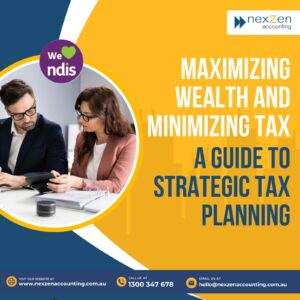Choosing the right structure for your business is a critical decision that can significantly impact its success and longevity. Whether you’re starting a new venture or considering restructuring an existing one, the structure you select will determine how your business operates, how it is taxed, and how it is legally protected.
What Pain Does having a right business structure remove from Our life?
Having a right business structure helps remove various pain points from our lives, including:
- Personal liability protection for your personal assets.
- Tax optimization and reduced tax burdens.
- Simplified compliance with regulatory requirements.
- Improved access to financing and investment opportunities
What Opportunities does having a right business structure create in life?
Having a right business structure creates various opportunities in life, including:
- Optimises tax position, minimising tax burdens and ensuring compliance.
- Facilitates partnerships and joint ventures with other businesses.
- Access to government grants and incentives specific to certain business structures.
- Provides a solid foundation for succession planning and business continuity.
What are the KPIs to measure
- Financial
- Tax Saving
- Cash flow
- Revenue Growth
- Non Financial
- Perpetuity in business
- Ease of Business expansion
- Personal Assets protection
What are the different business structures available for small businesses
The common business structures available for small businesses in Australia include:
- Sole Proprietorship
- Partnership
- Company
- Trust
- Incorporates Associations
- & more
What are the positive impacts of having a right business structure in place?
Having a right business structure can have many positive impacts on our life, including:
- A proper business structure separates personal and business liabilities, safeguarding personal assets from business-related risks.
- The right structure limits personal liability, protecting business owners from being personally responsible for business debts or legal issues.
- An appropriate business structure can offer tax benefits, such as deductions, exemptions, or lower tax rates, optimising the business’s financial position.
- A well-structured business increases credibility, making it easier to secure financing, attract investors, or qualify for government grants or funding programs.
What are the negative impacts of Not having the right business structure?
Not having a right structure for business can have a number of negative impacts on our life, including:
- Without the right business structure, business owners can be personally liable for business debts and legal obligations, putting personal assets at risk.
- Inadequate structuring may result in missed tax deductions, limited access to tax incentives, or higher tax rates, leading to increased tax liabilities for the business.
- Not having the right structure may result in non-compliance with legal and regulatory requirements, leading to penalties, fines, or legal consequences.
- Ineffective structuring can lead to confusion, inefficiencies, and conflicts within the business, hindering decision-making, coordination, and overall operational effectiveness. regulations, potentially resulting in penalties, audits, and legal issues.
High Level Roadmap
- Assess Your Business Needs and Goals
- Seek Professional Advice to understand the options available
- Evaluate Different Business Structures
- Consider Legal and Compliance Requirements:
- Assess Tax Implications
- Analyze Liability and Risk Factors
- Long-Term Planning and Flexibility
- Make an Informed Decision
- Seek Professional Assistance for Implementation
Case Study
Mr Richarson(not real name) is an NDIS support provider. He was earlier operating his business under sole trader & never truly dedicated his time or attention to choosing a business structure.
After a few years of high taxes and poor cash flow management that threatened his personal home, Mr Richardson decided it was time for action.
He learned from his mistakes and wanted to grow his business while ensuring he was in full legal compliance. We advised him a Pty Ltd Company after careful consideration on the following points:
- liability protection for the stakeholders
- A flat rate tax as opposed to marginal tax rate for sole traders
- Professional image and credibility of the business
- Separate legal entity, distinct from its shareholders.
- Business expansion & Succession Planning
- & More
Mr. Richardson experienced financial freedom for perhaps the first time. Though his business was always successful, taxes and other liabilities limited his personal income over the years. With his new structure, he saved money on taxes and had a plan for increasing his cash flow in the future. Perhaps more importantly, he increased the value of his business.
Remember, this is just a general guide and each organisation is different, so it’s important to properly review your finances with a cost-benefit analysis before making any big decisions. Our NexZen tax experts can provide personalised advice and can help you find out what you can claim as a small business. Get in touch to book a discovery call.
Until then, thanks for reading and if you liked this or you know someone who would also find this helpful please feel free to reply and share. See you next time. Can’t wait.









